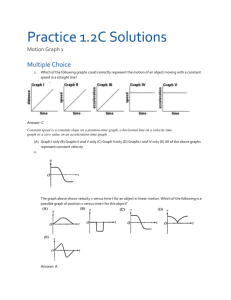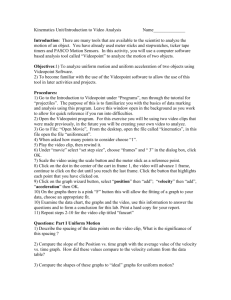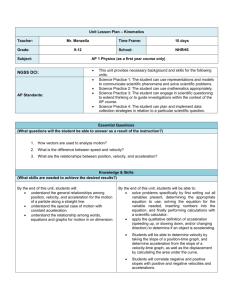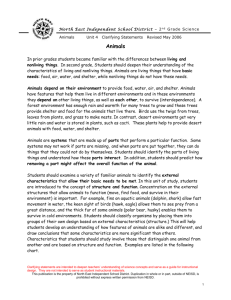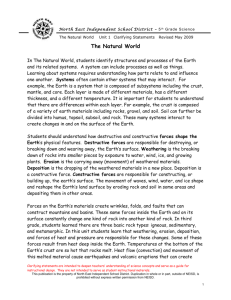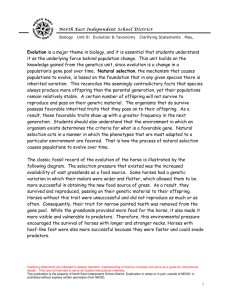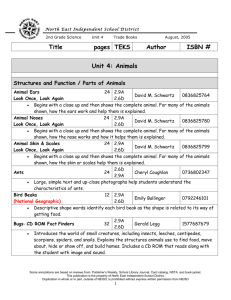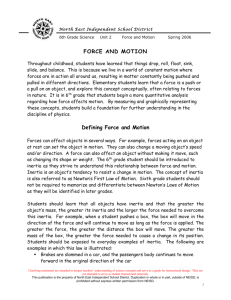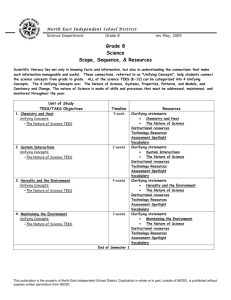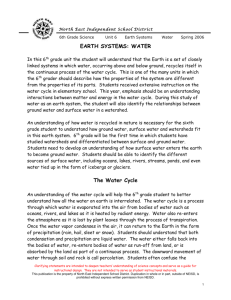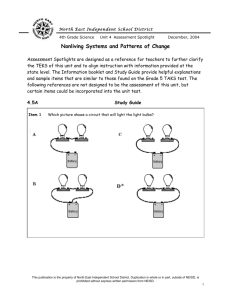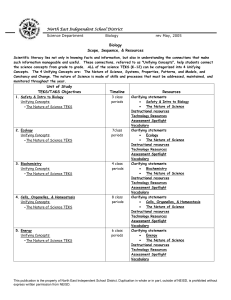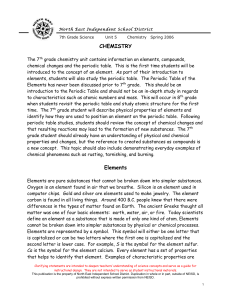Clarifying Statements - North East Independent School District
advertisement
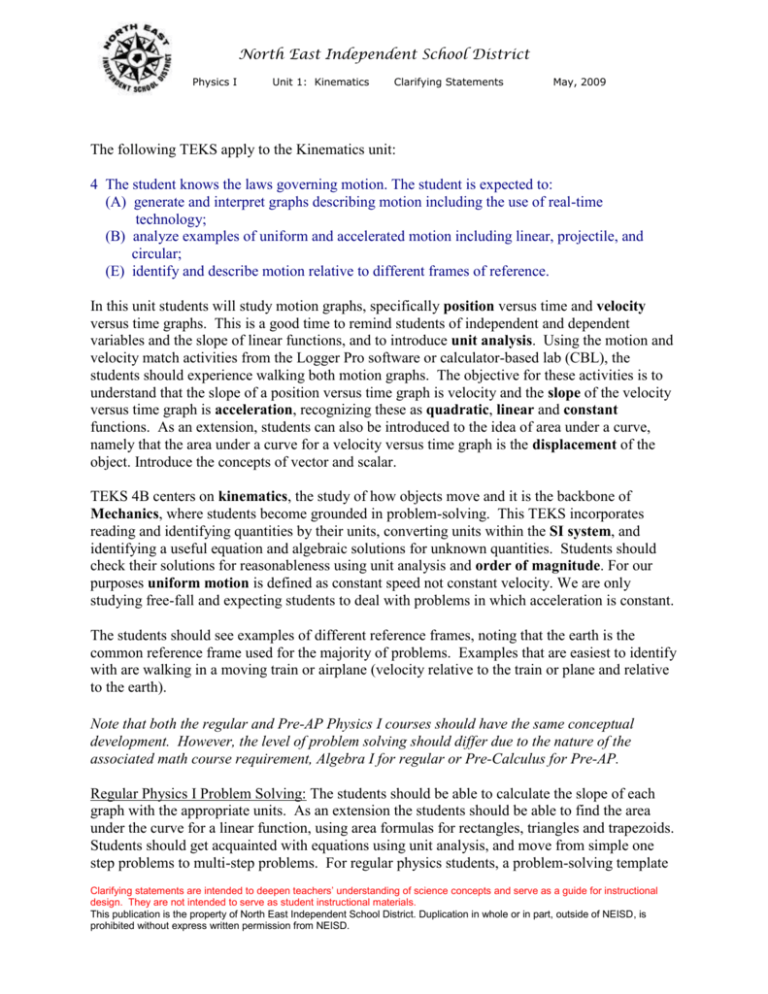
North East Independent School District Physics I Unit 1: Kinematics Clarifying Statements May, 2009 The following TEKS apply to the Kinematics unit: 4 The student knows the laws governing motion. The student is expected to: (A) generate and interpret graphs describing motion including the use of real-time technology; (B) analyze examples of uniform and accelerated motion including linear, projectile, and circular; (E) identify and describe motion relative to different frames of reference. In this unit students will study motion graphs, specifically position versus time and velocity versus time graphs. This is a good time to remind students of independent and dependent variables and the slope of linear functions, and to introduce unit analysis. Using the motion and velocity match activities from the Logger Pro software or calculator-based lab (CBL), the students should experience walking both motion graphs. The objective for these activities is to understand that the slope of a position versus time graph is velocity and the slope of the velocity versus time graph is acceleration, recognizing these as quadratic, linear and constant functions. As an extension, students can also be introduced to the idea of area under a curve, namely that the area under a curve for a velocity versus time graph is the displacement of the object. Introduce the concepts of vector and scalar. TEKS 4B centers on kinematics, the study of how objects move and it is the backbone of Mechanics, where students become grounded in problem-solving. This TEKS incorporates reading and identifying quantities by their units, converting units within the SI system, and identifying a useful equation and algebraic solutions for unknown quantities. Students should check their solutions for reasonableness using unit analysis and order of magnitude. For our purposes uniform motion is defined as constant speed not constant velocity. We are only studying free-fall and expecting students to deal with problems in which acceleration is constant. The students should see examples of different reference frames, noting that the earth is the common reference frame used for the majority of problems. Examples that are easiest to identify with are walking in a moving train or airplane (velocity relative to the train or plane and relative to the earth). Note that both the regular and Pre-AP Physics I courses should have the same conceptual development. However, the level of problem solving should differ due to the nature of the associated math course requirement, Algebra I for regular or Pre-Calculus for Pre-AP. Regular Physics I Problem Solving: The students should be able to calculate the slope of each graph with the appropriate units. As an extension the students should be able to find the area under the curve for a linear function, using area formulas for rectangles, triangles and trapezoids. Students should get acquainted with equations using unit analysis, and move from simple one step problems to multi-step problems. For regular physics students, a problem-solving template Clarifying statements are intended to deepen teachers’ understanding of science concepts and serve as a guide for instructional design. They are not intended to serve as student instructional materials. This publication is the property of North East Independent School District. Duplication in whole or in part, outside of NEISD, is prohibited without express written permission from NEISD. North East Independent School District Physics I Unit 1: Kinematics Clarifying Statements May, 2009 with guided practice on identifying variables is encouraged. Problem solving with regard to frame of reference is typically left to adding or subtracting the relative velocity of the specified reference frame in one dimension. Regular Physics I equations: 𝐴 = 𝑏ℎ 1 1 𝐴 = 2 ℎ(𝑏1 + 𝑏2 ) 𝐴 = 2 𝑏ℎ 𝑚 = ∆𝑦 ∆𝑥 Uniform motion: 𝑣= 𝑑 𝑡= 𝑡 𝑑 𝑣 𝑑 = 𝑣𝑡 Accelerated motion (acceleration constant): 𝑣𝑓 = 𝑣𝑖 + 𝑎𝑡 1 𝑑 = 𝑣𝑖 𝑡 + 2 𝑎𝑡 2 𝑣𝑓2 = 𝑣𝑖2 + 2𝑎𝑑 Clarifying statements are intended to deepen teachers’ understanding of science concepts and serve as a guide for instructional design. They are not intended to serve as student instructional materials. This publication is the property of North East Independent School District. Duplication in whole or in part, outside of NEISD, is prohibited without express written permission from NEISD.




